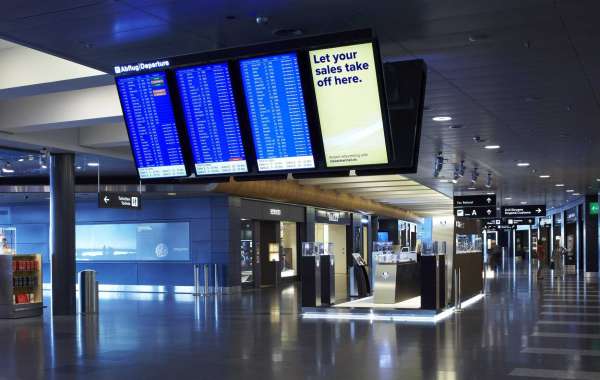Airport advertising has emerged as a powerful avenue for brands to connect with a captive and diverse audience, making a lasting impression on travelers from departure to arrival. As marketers seek tangible ways to measure the effectiveness of their campaigns, the concept of Return on Investment (ROI) becomes crucial. In this article, we delve into the key success metrics that define the ROI of airport advertising, outlining how they contribute to a campaign's success from the moment travelers set foot in the terminal until their final destination.
1. Impressions and Reach
The initial metric in gauging the success of airport advertising lies in impressions and reach. How many travelers have been exposed to the advertisement? Airports are bustling hubs with a continuous flow of passengers, ensuring a high level of exposure. The ability to capture the attention of thousands, or even millions, of travelers creates a foundation for a campaign's success.
2. Dwell Time Engagement
Unlike other advertising channels, airports provide advertisers with a unique advantage: extended dwell times. Travelers spend significant periods in terminals waiting for flights, allowing them to engage with advertisements more thoroughly. This engagement offers an opportunity to convey messages in-depth and leave a lasting impact on the audience.
3. Brand Recall and Recognition
Successful airport advertising leaves a mark that resonates long after travelers have reached their destination. The recall and recognition of the brand or product advertised are essential metrics. By conducting post-campaign surveys or analyzing social media mentions, marketers can assess the extent to which travelers remember and recognize the brand, indicating the effectiveness of the advertisement in creating a lasting impression.
4. Engagement with Interactive Displays
With the integration of technology, interactive displays have become a cornerstone of airport advertising. Metrics such as the number of interactions, time spent engaging, and interactions per passenger offer insights into the level of interest and interactivity generated by the campaign. High levels of engagement signify that travelers not only notice but actively participate with the advertisement.
5. Conversion and Action Metrics
The ultimate goal of any advertising campaign is to drive action. Whether it's downloading an app, visiting a website, or making a purchase, conversion metrics indicate how effective the campaign is at prompting travelers to take the desired action. Tracking click-through rates, QR code scans, or unique promotional codes provides valuable data on the campaign's impact on consumer behavior.
6. Social Media Amplification
In the age of social media, the success of an advertising campaign often extends beyond the physical space. Travelers often share their experiences and discoveries on platforms like Instagram, Twitter, and Facebook. Monitoring mentions, hashtags, and user-generated content related to the campaign can provide insights into its virality and amplification in the digital sphere.
Conclusion:
Measuring ROI in airport advertising goes beyond traditional metrics. It encompasses the entire traveler journey, from the initial impression to the lasting impact. The metrics outlined above provide a comprehensive view of a campaign's effectiveness, showcasing how well it engages, resonates, and drives action among the diverse and captive audience found within airport terminals. As marketers embrace these success metrics, they can navigate the airport advertising landscape with precision, ensuring that every impression counts and every traveler's journey becomes an opportunity for impactful engagement.








